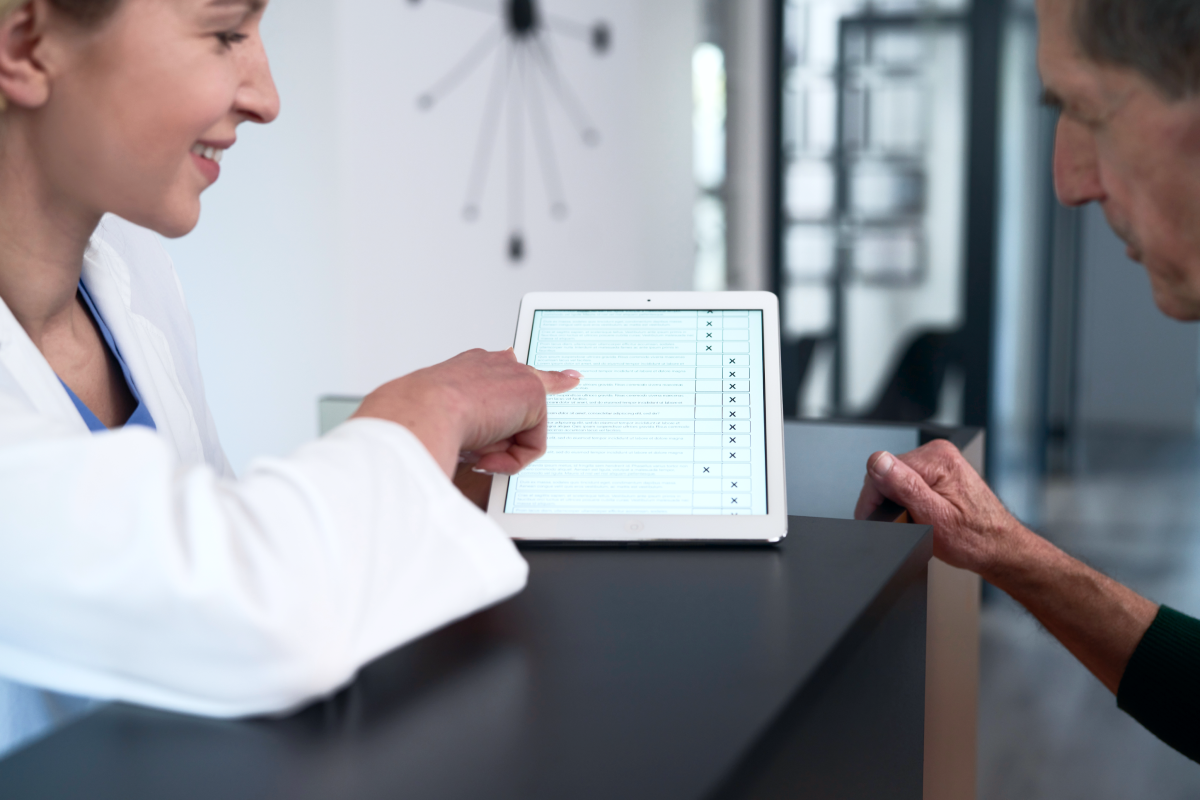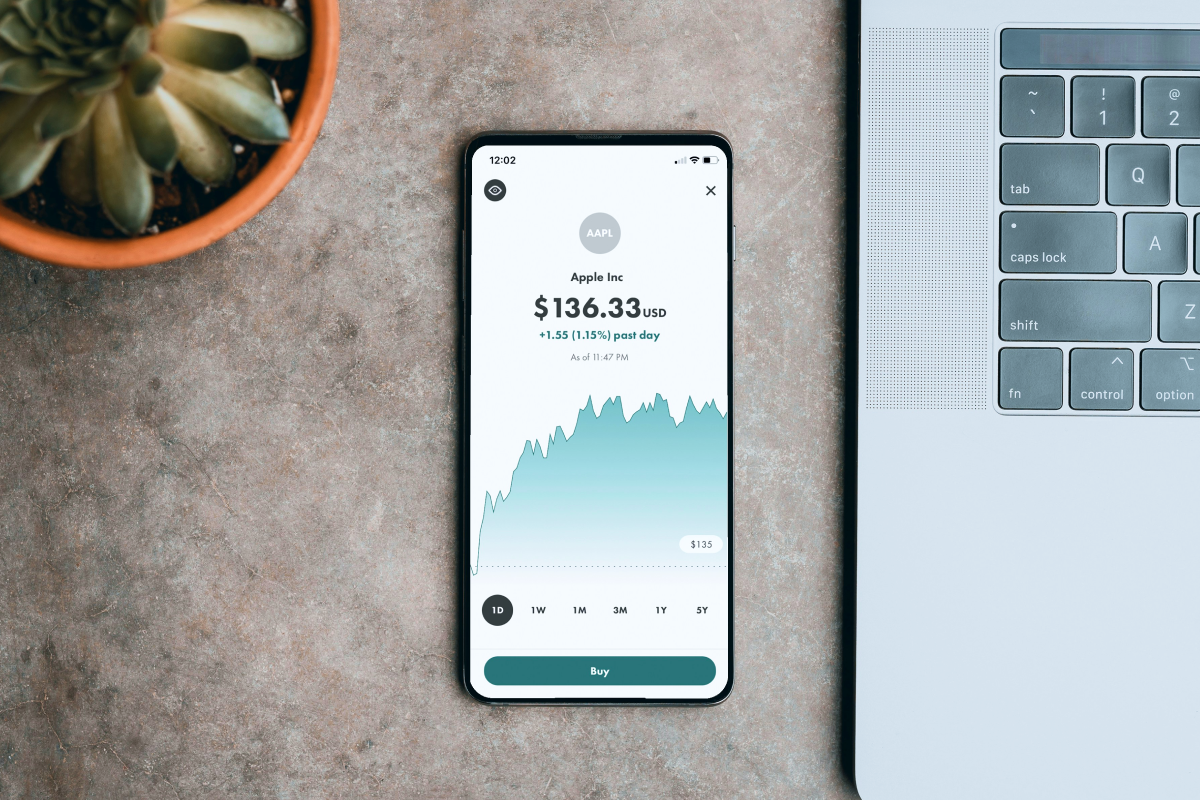With an advanced predicting analytics model in place, you don’t need to be Nostradamus to predict how your business will perform in the future. Also, there’s no need to rely solely on your gut feelings when making important decisions. Sounds great, right? Not only does it sound great, but it’s also possible in practice. So, how to how to implement predictive analytics for business processes? For that, you need machine learning.
Machine learning serves as a robust framework that can be used to develop predictive models that cater to various business needs – from anticipating customer behaviors to projecting future sales volumes.
I'm Andrii Bas, founder of Uptech and an expert in AI app development, alongside Oleh Komenchuk, a seasoned Machine Learning Engineer at our company. Here at Uptech, we provide all kinds of machine learning services and have built predictive models of various complexities. That's given us a good bit of insight into how this all works.
In this article, we would like to share that knowledge by explaining how to create a predictive model with ML and integrate it into your business step by step. Let’s get into how it’s done.
What Is Predictive Modeling?
Predictive analytics is a distinct field within data analysis that utilizes various methods – statistics, machine learning algorithms, and artificial neural networks – to predict potential future outcomes based on historical data.
The main goal of predictive analytics is to forecast what might happen in the future, including but not limited to things like trends, specific behaviors, and events, automatically categorize data points, or forecast potential results using data. To put it simply, predictive analytics uses all available information to figure out how likely something is to occur.
There are other types of analytics that you may have come across, namely descriptive analytics, diagnostic analytics, and prescriptive analytics, which are basically the stages of analytics maturity.
Types of analytics and how predictive analytics is different
While this article focuses on predictive modeling, it’s also important to mention all the analytics types so that you know how the approach we’re going to be discussing is different. It will also help you figure out what stage your business is at and whether or not you are ready and need to build predictive analytics software.

So, there are 4 main types of data analytics put in the order by the level of their maturity.
Descriptive analytics
What it does. Descriptive analytics provides insight into what has happened in the past by collecting and visualizing historical data. This type of analytics helps organizations understand their state over some time period.
Specialists needed. Mainly data analysts.
Tools used. Business intelligence (BI) platforms, data visualization software like Tableau or Power BI, and database management systems.
Approaches. The primary approach is data mining and aggregation for report and dashboard creation and visual representations for understanding trends and patterns.
Diagnostic analytics
What it does. Diagnostic analytics goes deeper into the data to discover patterns and dependencies and explain why something happened. Here comes more sophisticated data processing to uncover correlations and root causes.
Specialists needed. Statistical and sometimes data scientists.
Tools used. Advanced analytics platforms that offer drill-down capabilities, statistical software like SAS or SPSS, and complex data processing tools.
Approaches. Techniques include correlation analysis, drill-down, and multivariate statistics, and they often require the integration of various data sources to form a comprehensive view.
Predictive analytics
What it does. As we mentioned earlier, predictive analytics forecasts what is likely to happen in the future by using machine learning techniques to analyze large volumes of data.
Specialists needed. Data scientists and machine learning engineers who develop predictive models and handle large datasets.
Tools used. Machine learning frameworks like TensorFlow or Scikit-learn, data modeling tools, and cloud data platforms to handle scalability.
Approaches. This analytics type typically employs statistical models and machine learning algorithms to create predictions. Techniques include regression analysis, forecasting, classification, and other predictive modeling methods.
Since this is our subject matter, we’ll talk about tools and techniques in more detail further in the text.
Prescriptive analytics
What it does. Prescriptive analytics uses data to not only predict what will happen but also to recommend actions that could influence those outcomes.
Specialists needed. Operations research analysts and data scientists.
Tools used. Optimization and simulation software like Gurobi or IBM ILOG CPLEX, as well as decision management systems.
Approaches. This analytics type involves complex mathematical models and algorithms like linear programming, simulation, and stochastic optimization.
When and why to choose predictive analytics?
Using predictive analytics can be a great way for businesses to look ahead and make better decisions based on what's happened in the past. Here are a few scenarios when it can really come in handy.

Risk management in finances
Organizations use predictive analytics to identify potential risks and mitigate them before they become problematic. For example, in financial services, predictive models can forecast the likelihood of loan defaults or credit risks.
Demand and sales prediction in e-commerce and retail
A study by the IHL Group titled "True Cost of Out-of-Stocks and Overstocks – Can Retailers Handle the Truth?" revealed that North American retailers lost over $349 billion in sales in 2022 due to insufficient stock and overstock issues.
By analyzing historical sales data, trends, and patterns, predictive analytics can help retailers better forecast demand, optimize inventory levels, and reduce both out-of-stock and overstock.
Businesses can also leverage predictive analytics to understand customer behaviors, which can inform targeted marketing strategies, personalized experiences, and improved customer retention efforts.
Supply chain optimization in logistics
Logistics-wise, predictive analytics helps predict demand, manage inventory levels, and optimize supply chain operations. This, in turn, reduces costs and improves efficiency.
Better patient care in healthcare
In healthcare, predictive analytics can forecast patient outcomes, improve diagnostics, and personalize treatment plans. In addition to enhanced patient care, the day-to-day operations of healthcare providers get improved, too.
Predictive maintenance in manufacturing
Predictive analytics is used in industries like manufacturing and aviation to predict equipment failures and schedule maintenance, thus preventing downtime and extending equipment life.
When you opt for the predictive analytics strategy, this means that you’re ready to make a thoughtful investment in gathering good data and getting the right tools and people to make sense of it. Below, we explain how to do this right.

How to Build a Predictive Model: Predictive Modeling Process
As a branch of advanced data analytics, predictive data analysis can be truly lifesaving for many businesses.
For example, in 2011, UBS, a major Swiss bank, faced a big setback when a rough trader's unauthorized deals led to losses of around $2 billion. This whole mess could have been prevented if the bank had had a more advanced predictive analytics model in place.
We bet no one wants to walk in UBS’s shoes. That’s why we suggest that you get acquainted with how to implement predictive analytics for business processes.

Here’s a 6-step guide on how to build a predictive analytics model and actually be able to see the future:
- Define the project’s goals
- Collect the data in a single dataset
- Prepare and process data
- Select a suitable predictive modeling technique
- Build and train a predictive data analytics model
- Deploy and monitor the model
We’ll walk you through each step and explain all the nuances in detail below.
1. Definition of the project’s goals
As with any other software development project, you start by defining the goals. This is the most important stage, during which you answer these questions:
- What do we have?
- What can we do about it?
- What will our output be?
Here’s how you can approach this.
Problem statement
Before diving into data or algorithms, it's essential to identify the specific problems you want to solve using the predictive analytics model. This might involve discussions with stakeholders to understand their pain points, expectations, and what success looks like.
Agreement on the success metrics
Once the problems are clear, you set quantifiable success metrics. These metrics will guide the development process and help measure the effectiveness of the predictive model once deployed.
Identifying constraints and requirements
Every project has its unique constraints – these could be budgetary, time-related, or data-specific. Additionally, the model might need to adhere to technical or regulatory requirements. Think of them as early as possible when developing predictive models.
We’ll use two examples to show the differences in choices at each stage. Let’s say there’s a healthcare institution that wants a solution capable of identifying lung cancer at-risk patients. A completely different case will be an e-commerce business that wants to predict demand and pricing for certain goods it sells.
Healthcare example
- Goal: Identify patients at high risk of lung cancer.
- Success metrics: Accuracy of risk predictions, early detection rates, patient outcomes.
- Constraints/requirements: Compliance with healthcare regulations (e.g., HIPAA in the U.S.), high sensitivity and specificity in model predictions to minimize false negatives and positives.
E-commerce example
- Goal: Forecast product demand and optimal pricing strategies.
- Success metrics: Increased sales, optimized inventory levels, and improved customer satisfaction through better price management.
- Constraints/requirements: Adaptability to market trends, capability to handle large datasets from sales transactions, and integration with existing e-commerce platforms.
Once we know the goals and requirements, we can build a predictive model that fits specific industry needs. This first step lays a solid foundation for the technical development of the model.
Data collection
Once the goals are set, you proceed with collecting data for predictive analytics modeling. When it comes to data, there are usually 2 scenarios:
Scenario 1 – You already have internal business enough internal data that has been accumulated over the years.
Scenario 2 – You don’t have any available information, or its quantity is limited. If this is the case, data must be collected from external sources (e.g., free public datasets; some data can be purchased from providers).
Yet, in most cases, especially if your niche is specific, at least some internal data must be available because external data may not be sufficient or may not have what is needed.
Data quantity
This leads us to an important question, “How much data do I need for the predictive model to yield a good result?” The short answer is, “The more, the better.”
A more detailed answer sounds like this: The more the model learns complex patterns and dependencies, the better it will work and show a better score.
As predictive analytics typically involves classic machine learning tasks with tabular data, a minimal dataset – like 20 rows of data and 5 features – will likely be inadequate. The model will simply overfit these 20 cases, and when it sees something new that goes beyond the learning, it will predict incorrectly.
Let’s get back to our examples.
Healthcare example. To build a predictive model to identify patients at risk for lung cancer, using data from 100 patients with just a few features such as age, gender, weight, heart rate, and blood pressure would be insufficient.
Such models require large-scale data to detect patterns and risk factors associated with lung cancer accurately. A more appropriate dataset might include a few thousand patient records, encompassing a variety of demographics, health histories, lifestyle factors, and genetic information, to ensure the model can generalize well across different patient populations.
E-commerce example. Similarly, for an e-commerce company looking to develop predictive models for price and demand forecasting, relying on just 20 sales transactions would not capture the complexity of consumer behavior and market dynamics.
A sufficiently large dataset for this scenario would ideally consist of 100,000+ transactions, capturing variability across different times, seasons, and promotions to provide a comprehensive view that supports accurate forecasting.
Data quality
Having enough data to train a predictive analytics model is great. However, you shouldn’t forget about the “garbage in – garbage out” rule. It will ensure that the data is accurate, clean, and relevant. For instance, using 1,000 accurate patient records is far more valuable than using 50,000 records, where 70% are flawed with errors, anomalies, or missing information. Additionally, the dataset must be representative and free from biases toward any particular group to prevent skewing the model’s outputs.
Speaking of quality, to achieve it, you will need to process the data, which leads us to the next stage.
Data preparation and processing
Here comes the most important and time-consuming step in the AI predictive modeling process: data preparation and processing. This stage can take up to 80% of the entire project time due to the detailed work required.
Data cleaning
The first action is to clear out errors and inconsistencies. This means that we:
- remove noise
- correct inaccuracies
- fill in the missing data with average numbers
- delete incomplete or abnormal records, etc.
Cleaned data prevents poor-quality inputs from skewing the model’s predictions.
Data transformation
After cleaning, the data typically needs transformation into a suitable format for the model. At this step, we normally do the following.
Data normalization – adjusting data values so they all fall within the same range, typically between 0 and 1, so that those values influence the model equally.
For example, if you're using age and income data:
- Age might range from 18 to 90.
- Income might range from $20,000 to $200,000.
By applying a method like Min-Max scaling, both age and income get transformed to a 0 to 1 scale. This way, no feature outweighs another just because of the difference in the range of values, allowing the model to evaluate them fairly.
Data standardization – converting data to one common format. For example, dates in different databases can stored in different formats, like DD/MM/YY or MM/DD/YY. Using data standardization, we agree on one suitable format and convert all other forms to fit it.
Data conversion – transforming categorical data to numerical formats as the model can only effectively process the numerical data.
Feature engineering
This is the process of using domain knowledge to select, modify, or create new features from raw data to increase the predictive power of machine learning algorithms. Basically, what we do is assess the usefulness of the existing data features and decide if new ones are necessary.
This step requires a thorough examination of the data to discover underlying relationships and determine the significance of each feature.
For example, instead of using height and weight as separate features, we can create a new variable, Body Mass Index (BMI), when working on patient data.
Creation of training and testing datasets
The final step is to divide the data into separate sets: usually 80% for training and 20% for testing and validation. This division helps us properly train the model and accurately evaluate its performance.
Selection of predictive modeling techniques
Once we have data, we select a predictive modeling technique. There are different types of predictive models to choose from, depending on the task you want to solve. For example, in the Scikit-learn library, there is even a separate roadmap that helps understand which model is better to use depending on what and how much data there is and what the goal is.
We’ll walk you through the key predictive modeling techniques so that you know the key differences and their applications.

Classification
Classification in machine learning simply predicts the category or group to which a given piece of data belongs. It takes input data and assigns a category (class) label based on the characteristics these data possess.
Since classification is a supervised machine learning method (where a human serves as a teacher), the model is given all necessary input data along with labels or tags that indicate the category for each piece of data. Essentially, we teach the model by showing it examples from the data. If it's tabular data, we may assign each row of data to a specific category. This way, the model understands which category to assign to similar new data in the future.
How it can be used in our examples:
- In healthcare, classification models could help determine whether a patient’s tumor is malignant or benign based on test results.
- In e-commerce, classification could help categorize customer reviews as positive or negative. Customer sentiment analysis can further help businesses understand consumer preferences and satisfaction levels, which in turn can influence demand forecasting.
There are several algorithms that can solve the classification task. We commonly opt for these ones:
Logistic Regression is a statistical algorithm that estimates the probability of a binary outcome based on a given dataset of independent variables
Decision Trees is a popular algorithm that makes decisions by splitting data over and over according to certain conditions until we have only 2 classes left.
Support Vector Machines (SVMs) algorithm looks for the widest possible margin between the classes and places the boundary between them.
Boosting is an ensemble method that combines a series of weak learners to form a strong one, aiming to minimize training errors.
Regression
Regression is a supervised machine learning approach that is used to find and learn dependencies between different variables in the data and express them in numbers. If classification predicts a label, regression predicts a number.
How it can be used in our examples:
- In healthcare, it could estimate a patient’s hospital stay based on their symptoms and previous medical history.
- In e-commerce, regression can forecast how much of a product will sell in the next quarter based on historical and current trends.
Common algorithms used to solve regression problems are:
Linear Regression is an algorithm that shows the dependency between two variables – dependent (one that is influenced) and independent (one that influences) in a numerical value.
Polynomial Regression is an extension of linear regression that accounts for more different variables and models non-linear relationships.
Clustering
Clustering is an unsupervised machine learning approach, which means there are no labels and no human supervisor to give the model answers. Clustering is used to group a set of objects in data into clusters depending on whether their parameters are similar or dissimilar. Objects within the cluster should be more similar to each other according to certain parameters than to objects from other clusters.
This method is a bit more difficult to control in terms of the accuracy of results. However, it proves useful in many cases.
- In healthcare, it can be useful for identifying subgroups of patients with similar health profiles or disease symptoms, e.g., patients at risk of lung cancer we’ve talked about earlier.
- In e-commerce, the method can be used in tasks such as customer segmentation based on buying behavior or preferences.
Common algorithms include the following ones.
K-means clustering sorts data points into one of the K clusters based on their distance from the center of the clusters.
DBSCAN (density-based spatial clustering of applications with noise) clusters data based on density (low and high), which is excellent for data with irregular patterns.
Time-series forecasting
Time series forecasting is a method used to predict future events by analyzing trends and patterns observed in historical time-series data. Unlike all the previous techniques, this one is used when we need to do analysis over time intervals.
How it can be used in our examples:
- In healthcare, this could predict the number of hospital admissions during flu season.
- In e-commerce, it could forecast demand and sales during the holiday seasons.
Common algorithms include the following ones.
ARIMA (Autoregressive Integrated Moving Average) functions like a filter that helps distinguish meaningful data (signal) from random data (noise).
SARIMA (Seasonal AutoRegressive Integrated Moving Average) is an extension of the ARIMA model that specifically addresses seasonal variations in data.
While predictive analytics modeling is the task of classic machine learning in the prevailing number of cases, sometimes you can opt for neural networks as well. As more complex models, they can capture nonlinear relationships in data and can be a powerful tool for both classification and regression tasks.
In healthcare, neural networks can help diagnose diseases from complex patterns in imaging data. In e-commerce, they can enhance personalization algorithms by predicting individual customer preferences.
Predictive data analytics model training
Once we have selected the appropriate predictive model, we train it using your prepared dataset. During this stage, you set specific parameters – configurable elements that dictate how the model behaves. For example, parameters in a healthcare model predicting lung cancer risks might control the rate of learning or the complexity of the model to prevent overfitting.
We also need to adjust these parameters to improve the model's accuracy and efficiency. For example, in e-commerce applications for demand prediction, these adjustments might deal with handling seasonal trends or adapting to changes in consumer behavior.
Also, when we train a predictive model, we assess its performance against the testing data using metrics that are appropriate for its type.
For classification tasks, we use metrics such as:
- Accuracy assesses the overall correctness of the model.
- Recall measures the model's ability to identify all relevant instances.
- Precision checks how many of the instances the model predicted correctly.
In regression tasks, common metrics include:
- Mean Squared Error (MSE) calculates the average squared difference between the estimated values and the actual values.
- R-squared shows how well the model predicts unseen samples.
Of course, there are a lot of other machine learning metrics to include.
Today, to build a predictive analytics model, the teams use some form of application, whether it's open-source, licensed software, or custom-developed tools. There are quite a few predictive modeling tools out there. Below are the most popular and commonly used options:
Tools and platforms
- TensorFlow – a Python library designed for machine learning that offers a broad range of tools for designing, training, and deploying models.
- Scikit-learn is another Python library known for its ease of use in implementing standard machine learning algorithms.
Programming languages: Mainly Python and R
Model deployment and monitoring
After successful evaluation, the model is ready for deployment to make predictions on new data. Deploying the model means integrating it into the existing environment, where it can start providing insights based on live data. Based on the complexity of your data infrastructure, there might be a need for multiple integrations via APIs, which often takes a substantial amount of time.
However, deployment is not the final step. Continuous monitoring is crucial to ensure the model performs well consistently. What we do is keep track of its performance and update it as necessary. These could be things like adjusting parameters and retraining with new data to maintain accuracy and relevance. This ongoing process helps adapt to changes and improves the model over time.

Most Common Predictive Modeling Challenges and Ways to Tackle Them
If we said that building predictive models was easy, this would be untrue. Everyone who takes on this task must be ready to face the challenges along the way. Below, we have rounded up the most common issues as well as the solutions to deal with them successfully.
Data Sparsity
Data sparsity occurs when your dataset includes a lot of missing or corrupt data or has many zeros or “N/A” values.
One way to address this is to fill in the missing data with average or median values from the rest of the dataset. For example, if we have 1,000 age records and 50 are missing, we could use the average age from the remaining 950 records to fill in the gaps.
For a more nuanced approach, we might categorize the data and compute the most fitting values for each category. If only a few values are missing, it might be simpler and more effective just to remove those entries if it doesn't skew the data distribution.
Feature selection
Sometimes, datasets have too many features, which can complicate modeling. To simplify the representation of features, we can select only those that are the most relevant to the case. This can be done through manual analysis or by using models like Random Forests or Gradient Boosting, which can help determine the importance of each feature.
Another method is Principal Component Analysis (PCA), which transforms a large set of variables into a smaller one that still contains most of the information in the large set.
Interpretability
The interpretability issue may arise when the complexity of a model makes it difficult to understand how it makes its predictions. One of the ways we can improve interpretability is by using simpler models, such as Linear Regression or Decision Trees, which make it easier to see how input data is transformed into predictions.
Overfitting
Overfitting happens when a model learns the detail and noise in the training data to the extent that it negatively impacts the performance of the model on new data.
To prevent this, it's important to use both training and testing data to evaluate how the model performs on unseen data. Adjusting model parameters or features based on the performance of the testing data can help mitigate overfitting.
How Can Uptech Help with Predictive Modeling?
At Uptech, we provide a wide array of AI and machine learning services, including building predictive analytics models of different types and levels of complexity. Over the past 3 years, Uptech has successfully launched 25+ AI-powered solutions, capitalizing on advancements in LLMs to enhance capabilities in computer vision, conversational AI, and text generation.
With our work, we help startups and SMBs integrate AI and ML capabilities into their applications to reach automation, better efficiency, and personalization.

For instance, our AI integration in Aboard AI enables real-time flight data analysis for actionable insights, while Presidio Investor uses AI to manage financial data effectively. Apart from that, our company adheres to lean principles in our AI development, ensuring our solutions are both targeted and compliant.
If you want to build an effective ML-powered predictive analytics model or have a project in mind, feel free to contact us for a consultation.
FAQs
How to build a prediction model from scratch?
Start by defining the goals of your project. Collect and prepare your data, then choose a suitable modeling technique based on your needs. Train your model on the prepared data, deploy it, and continuously monitor its performance.
What are the steps in predictive modeling?
To build a predictive analytics model, you must follow these 6 steps:
- Definition of the project’s goals
- Data collection
- Data preparation and processing
- Selection of predictive modeling techniques
- Predictive data analytics model training
- Model deployment and monitoring
How long does it take to build a predictive model?
The time to build a predictive model can vary widely depending on the complexity of the data and the goals of the project. It could take from 1-3 months to 6+ months.
What is the easiest way to build predictive models?
The easiest way to build predictive models is to use automated tools and platforms that provide pre-built algorithms and easy-to-use interfaces, such as Python libraries like Scikit-learn or tools like AutoML.
How to train a predictive model?
To train a predictive model, you first feed it historical data from your training dataset that has been cleaned and prepared. Then you set the parameters for the learning algorithm and allow the model to learn from the data to make accurate predictions.
How to choose a predictive model?
Always choose a predictive model based on the task you want it to perform. If you need to predict categorical values, choose one of the classification techniques, e.g., logistic regression or decision trees. If you deal with time-series forecasting, opt for ARIMA or SARIMA algorithms.
Apart from this, evaluate the complexity of the prediction model you need. Maybe classic ML algorithms won’t work here, and you will be using deep neural networks for better outcomes.





































































































